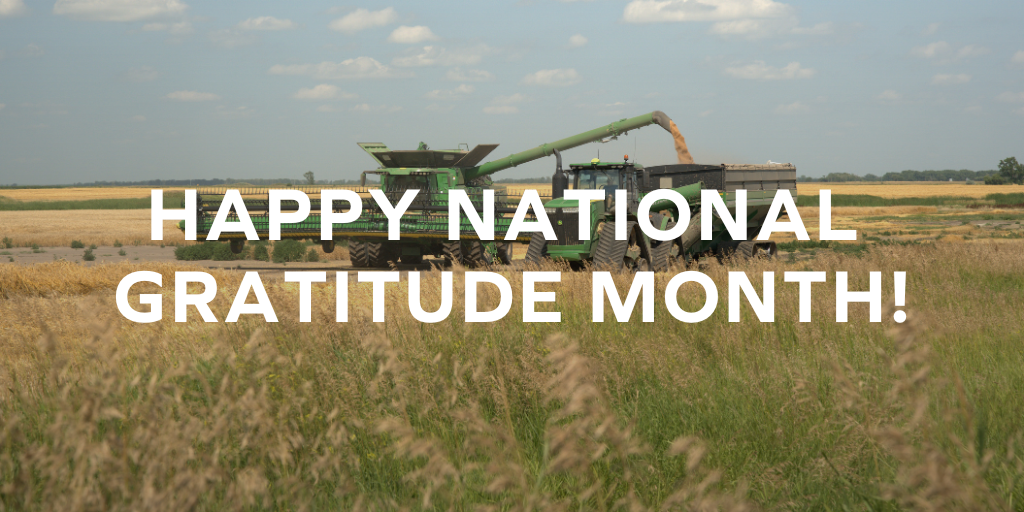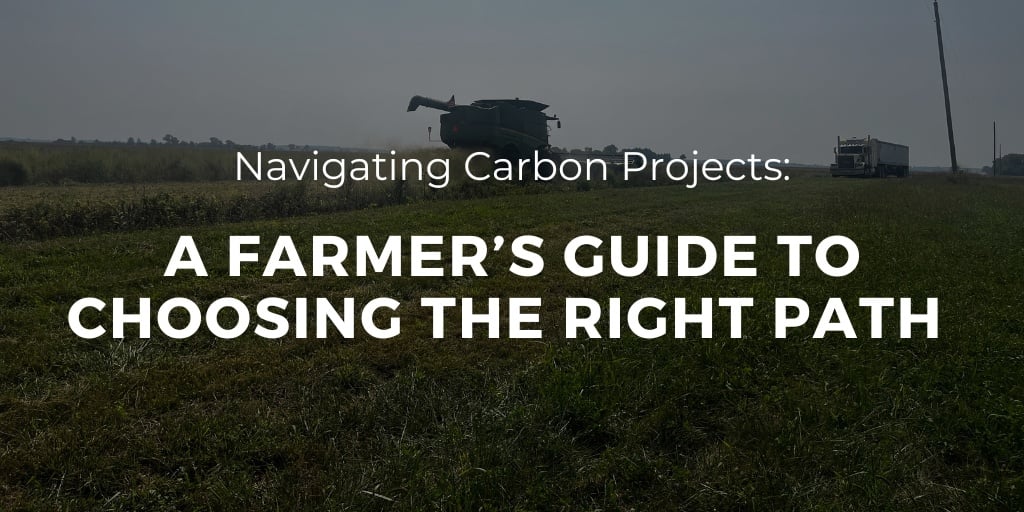.jpg?width=770&height=385&name=Blog%20headers%20%232%20(96).jpg)
In today’s agricultural landscape, carbon is more than just a climate buzzword—it's a critical ingredient that impacts everything from soil health to farm profitability. First off, carbon makes plants grow and keeps soil good for years and healthy crops. Carbon is essential to farms, helping soil hold water, power photosynthesis, and grow better roots. Plus, as carbon markets and sustainability programs continue to grow, farmers are increasingly being asked to manage their land in ways that reduce carbon emissions and hold more carbon in the soil. But what does that really mean to a farmer’s bottom line?
If you ever feel overwhelmed by the jargon—terms like "carbon credits," "sequestration," or "carbon offsets"—you’re not alone. Understanding these key definitions is essential not just for understanding what buyers in the commodities market are wanting, but also for unlocking new opportunities that can improve your soil, your yields, and the overall long-term profitability of your farm operation.
In this blog, we’ll break down 8 must-know carbon terms and explain why they matter for your farm.
1. Carbon Credits
A carbon credit is a permit or certificate that represents the right to emit one ton of CO2 or the equivalent amount of a different greenhouse gas (GHG). For farmers, earning carbon credits can be achieved through practices that reduce GHG emissions or capture carbon, such as reforestation, improving soil health, or employing sustainable livestock management techniques. These credits can then be sold to companies looking to offset their carbon footprint.
2. Carbon Abatement
Carbon abatement refers to any action taken to reduce or eliminate GHG emissions. In agriculture, this could involve switching to renewable energy sources, utilizing no-till farming practices to maintain soil carbon, or optimizing fertilizer use to reduce nitrous oxide emissions. Carbon abatement measures directly contribute to the fight against climate change by lowering the overall emissions associated with farming operations.
3. Carbon Insets
Carbon insets are investments made within a company's own supply chain to reduce carbon emissions. For farmers, this could mean adopting new technologies or practices that are more efficient and emit less carbon. For example, a food processing company might invest in more sustainable agricultural practices among its suppliers (the farmers) to lower the carbon footprint of its products.
4. Carbon Offsets
Carbon offsets are a way for individuals or companies to compensate for their emissions by funding equivalent carbon dioxide saving projects elsewhere. Unlike carbon insets, offsets can be achieved through projects not directly related to the company's own activities. For farmers, participating in carbon offset projects might involve setting aside land for reforestation or implementing renewable energy projects that contribute to the overall reduction of GHGs in the atmosphere.
5. Carbon Intensity
Carbon intensity refers to the amount of carbon emissions produced per unit of another metric, such as per kilogram of product produced or per hectare of land used. Reducing carbon intensity in farming could involve increasing the efficiency of production processes so that less GHG is emitted per unit of agricultural output. This can be achieved through precision agriculture, better waste management, and other sustainable practices.
6. CI Score (Carbon Intensity
This measures the amount of carbon dioxide emitted per unit of energy or product output, highlighting the environmental impact of agricultural practices and products. A lower score means the product and its production created fewer emissions and has a reduced carbon footprint that is valuable to some commodity buyers.
7. 45Z Tax Credit
A federal program that provides tax credits for producing renewable, low-carbon biofuels, affecting how farmers might manage their crops and emissions for better pricing. Eligibility involves a CI score below a baseline related to the lifecycle of emissions as well as specific documentation.
8. Carbon Sequestration Credits
These credits represent the removal of CO2 from the atmosphere, rewarding activities such as afforestation, soil carbon management, and geological sequestration. These credits are the result of a verified project that demonstrates that the carbon is captured and stored by a specific set of criteria
How can your farm be more profitable by thinking about carbon?
Many companies and organizations offer programs that help farmers measure and verify carbon sequestration on their land and to have greater carbon efficiency in your practices. These programs can provide guidance, tools, and financial incentives for adopting carbon-friendly farming practices.
In select markets, Holganix has released a carbon offering for current agricultural customers. Although the 2024-2025 program is sold out, ready out now to learn more about getting on the wait list for the 2025-2026 Soil Stewardship Program.
 |
September 19, 2024
|
1:00 PM
|
September 19, 2024
|
1:00 PM
-2.jpg)
-1.jpg)
-1.jpg)
-1.jpg)
.jpg)

-2.jpg)
-1.jpg)
-1.jpg)
-1.jpg)
.jpg)




.jpg?width=770&height=385&name=Blog%20headers%20%232%20(96).jpg)
.webp)
-1%20(1).webp)
-831535-2.webp)



.jpg)
.png)

.jpg)